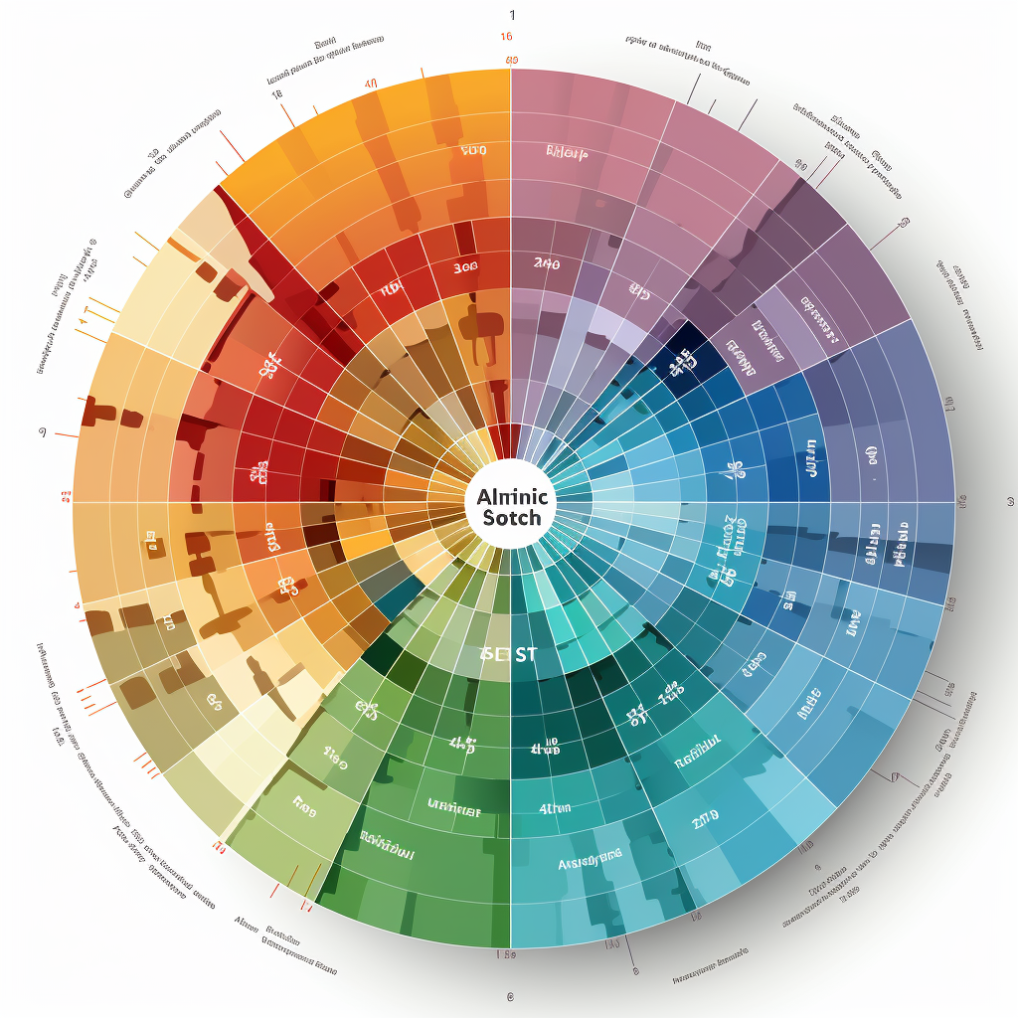Autism Pie Chart: A Comprehensive Visual Guide to Understanding the Spectrum

Introduction
Autism spectrum disorder (ASD) is a complex neurodevelopmental disorder that affects communication, social interaction, and behavior. It is a condition diagnosed in early childhood and can vary widely in severity and presentation.
Individuals with autism often face social skills, language development, and sensory processing challenges. These challenges can impact their ability to navigate the world and sometimes lead to difficulties in forming and maintaining relationships.
While numbers and statistics can offer a broad understanding of autism, it is essential to consider visual tools that provide immediate and relatable insights. One such tool is the Autism Pie Chart, which can help us better understand the various aspects and characteristics of autism.
The Autism Pie Chart categorizes different aspects commonly associated with autism, such as communication abilities, repetitive behaviors, sensory sensitivities, and social interaction difficulties. By visualizing these aspects’ proportions, we can better understand how autism affects individuals.
Communication abilities encompass a range of skills, including speech and nonverbal communication. Many individuals with autism struggle to express themselves effectively through language or alternative communication methods. These challenges may result in difficulties initiating and sustaining conversations or understanding social cues.
Repetitive behaviors, another common aspect of autism, can manifest in various ways. Some individuals may engage in repetitive movements like hand flapping or rocking, while others may have intense, narrow interests. These repetitive behaviors can serve as a source of comfort or provide a sense of predictability in an otherwise overwhelming world.
Sensory sensitivities are also frequently observed in individuals with autism. They may experience heightened or diminished sensitivity to sensory stimuli like sounds, lights, textures, or smells. These sensitivities can influence how they interact with their environment and may lead to sensory overload or avoidance behaviors.
Difficulties with social interaction are a core characteristic of autism. Individuals with autism may find understanding and interpreting social cues challenging, resulting in difficulties initiating and maintaining relationships. This aspect of autism can impact daily life, from making friends to navigating social expectations in academic and professional settings.
While the Autism Pie Chart visually represents these different aspects, it is essential to note that every individual with autism is unique, and their strengths and challenges may vary widely. Understanding and supporting individuals with autism requires a holistic approach that recognizes their needs and abilities.
By using tools like the Autism Pie Chart and gaining a deeper understanding of the different aspects of autism, we can enhance awareness, promote acceptance, and create a more inclusive society for individuals on the autism spectrum.

Autism Pie Chart
What is an Autism Pie Chart?
An Autism Pie Chart is a circular chart divided into various sections or “sl”ces,” e”ch representing a different aspect or characteristic commonly associated with autism. The size of each unit can also indicate the severity of the symptom or characteristic. For example, if social communication is a significant challenge, that slice of the pie would be larger than the others.
Why Use a Pie Chart?
- Simplicity: Pie charts are straightforward to understand, making them accessible to people of all ages.
- Quick Insights: A glance can offer a wealth of information.
- Comparative Analysis: It allows for easy comparison between different aspects of autism.
Components of the Autism Pie Chart
Social Communication (Example Percentage: 30%)
- Difficulty making eye contact
- Difficulty understanding social cues
- Problem taking turns in conversation
- Difficulty understanding sarcasm
- Difficulty expressing emotions
Repetitive Behaviors (Example Percentage: 25%)
- Spinning objects
- Rocking back and forth
- Hand flapping
- Repeating words or phrases
- Adhering to rigid routines
Sensory Processing (Example Percentage: 20%)
- Oversensitivity to noise
- Oversensitivity to touch
- Under sensitivity to pain
- Difficulty with changes in routine
- Difficulty with transitions
Additional Components
You may also find slices for co-occurring conditions like ADHD, anxiety, gastrointestinal issues, and other factors like sensory sensitivities or communication barriers.
How to Use the Autism Pie Chart
- Educational Tool: Ideal for teachers, therapists, and families to educate communities.
- Self-Understanding: Helps autistic individuals understand their unique profile.
- Communication: Useful for discussing ASD with doctors, teachers, and family members.
Things to Keep in Mind
- The pie chart is not a perfect representation of ASD. Symptoms can overlap, and their severity can change over time.
- It is not a diagnostic tool. Only a qualified professional can diagnose ASD.
- Every person with ASD is unique, and the pie chart should be adapted to reflect this.
Conclusion
The Autism Pie Chart serves as a visual representation and a conversation starter. While it may not capture the full complexity of autism, it is a stepping stone for deeper conversations and understanding. It can demystify autism, foster understanding, and promote inclusion.
References
- American Psychiatric Association. (2013). Diagnostic and Statistical Manual of Mental Disorders (5th ed.). Arlington, VA: American Psychiatric Publishing.
- Baron-Cohen, S., Leslie, A. M., & Frith, U. (1985). Does the autistic child have a “th”ory of mind”? “ognition, 21(1), 37-46.
- Centers for Disease Control and Prevention (CDC). “Da”a & Statistics on Autism Spectrum Disorder.” R”trieved from CDC Website
- Grandin, T. (2006). Thinking in Pictures, Expanded Edition: My Life with Autism. Vintage.
- Kanner, L. (1943). Autistic disturbances of affective contact. Nervous Child, 2(3), 217-250.
- Lord, C., Rutter, M., & Le Couteur, A. (1994). Autism Diagnostic Interview-Revised: A revised version of a diagnostic interview for caregivers of individuals with possible pervasive developmental disorders. Journal of Autism and Developmental Disorders, 24(5), 659-685.
- Silberman, S. (2015). NeuroTribes: The Legacy of Autism and the Future of Neurodiversity. Avery.
- Simonoff, E., Pickles, A., Charman, T., Chandler, S., Loucas, T., & Baird, G. (2008). Psychiatric disorders in children with autism spectrum disorders: Prevalence, comorbidity, and associated factors in a population-derived sample. Journal of the American Academy of Child & Adolescent Psychiatry, 47(8), 921-929.
- “Vi”ual Supports and Autism Spectrum Disorders.” A”tism Speaks. Retrieved from Autism Speaks Website
- Wing, L., & Gould, J. (1979). Severe impairments of social interaction and associated abnormalities in children: Epidemiology and classification. Journal of Autism and Developmental Disorders, 9(1), 11-29.

